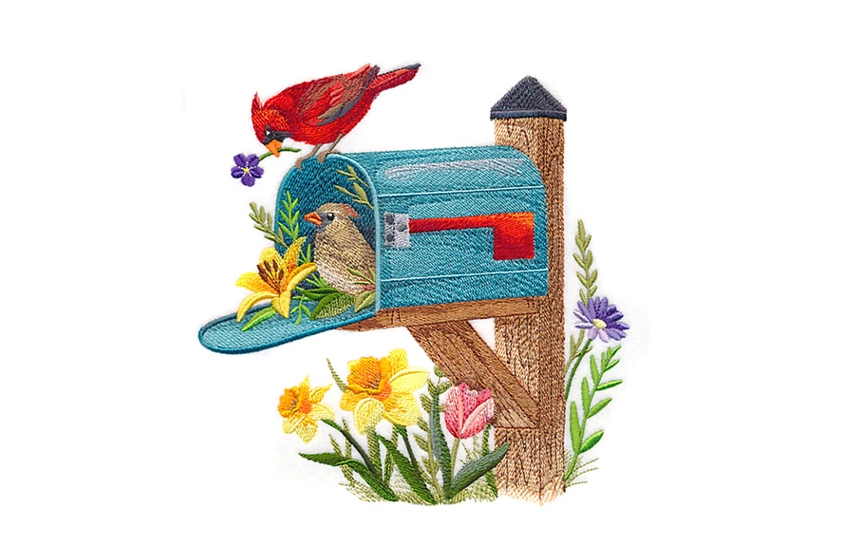Here in Minnesota, we're experts about cold and warmth. Guarding against subzero temperatures requires lots and lots of layers of warm, fluffy, fuzzy fabrics.
That's one of the many reasons why we love Sherpa fabric. Sherpa is a knit terrycloth that has been brushed and washed to raise the fibers, resulting in a plush feeling that's similar to sheep's wool. It's made of polyester fibers, and available in a wide variety of textures and colors. And, it's warm. Really, really warm.
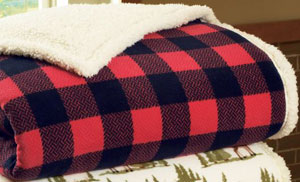
Most often you'll find Sherpa used as a throw or blanket, or as a shell or lining to jackets and sweatshirts. Sometimes it's used as a lining or trim to winter boots, also. And, it's not just for humans. Dog and horse coats and blankets use Sherpa, too.
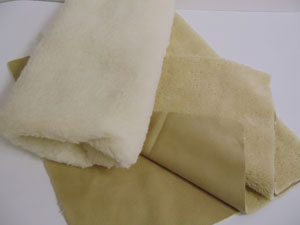
For this article I took several samples of Sherpa into the sewing room and tested a variety of methods to discover the best results.
I was happy to discover that all types of Sherpa are great for embroidery. Because Sherpa has a high nap, choose solid-filled designs with larger filled in areas, or designs with satin stitch columns. Using toile, Redwork, or Blackwork designs won't work well, as the running stitches will get lost in the fabric nap.
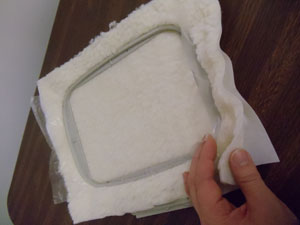
Using a 75/11 sharp needle will keep the edges of the design crisp and clean.
Choose a medium-weight (2.0 or 2.5 ounce) cutaway stabilizer. A cutaway helps to hold the stretchy knit weave of the fabric in place while embroidering.
(Using a tear-away stabilizer will allow the fabric to shift and skew in the hoop, and you'll likely see gaps in the stitchout.)
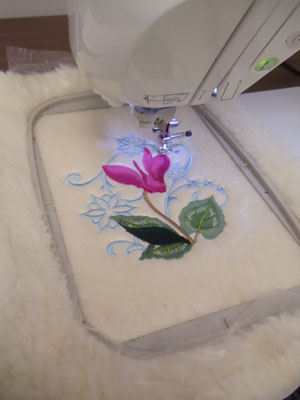
I used a lightweight water-soluble stabilizer (Sulky Solvy) as a topping. Topping helps smooth out the wooly surface of the fabric, and prevents the stitches from sinking in.
You'll notice that I've hooped the fabric with the stabilizer. This helps to keep the stitches crisp, clean, and in the right place. Not hooping the fabric will result in fuzzy stitches, and possibly gapping.
Some embroiderers don't like to hoop bulky items, or items that may have a hoop ring (aka hoop burn) after the hoop is removed. However, because Sherpa is polyester and washable, any hoop marks will come out after laundering or steaming.
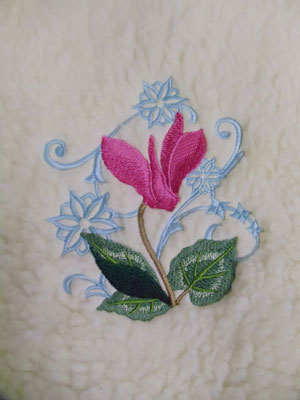
After embroidering, unhoop the fabric and tear away the topping. Use a tweezers to remove any small bits of the topping. You can also dab the fabric with a bit of water to dissolve the stabilizer, and the small amount that remains will be removed when laundering.
Hooping the Sherpa and using cutaway stabilizer and a topping gives great results! The stitches are crisp and clear, and all the sections of the design are perfectly aligned. The solid fills and satin stitches make this design stand out nicely on the plush, wooly fabric.
When working with a premade garment, the most challenging part will be hooping and securing the fabric so that it doesn't prevent the hoop from moving while embroidering. Using chip clips or large hair clips will help considerably. Be sure to pin or clip sleeves, collars, etc. well out of the way so that the hoop can move freely and easily.


